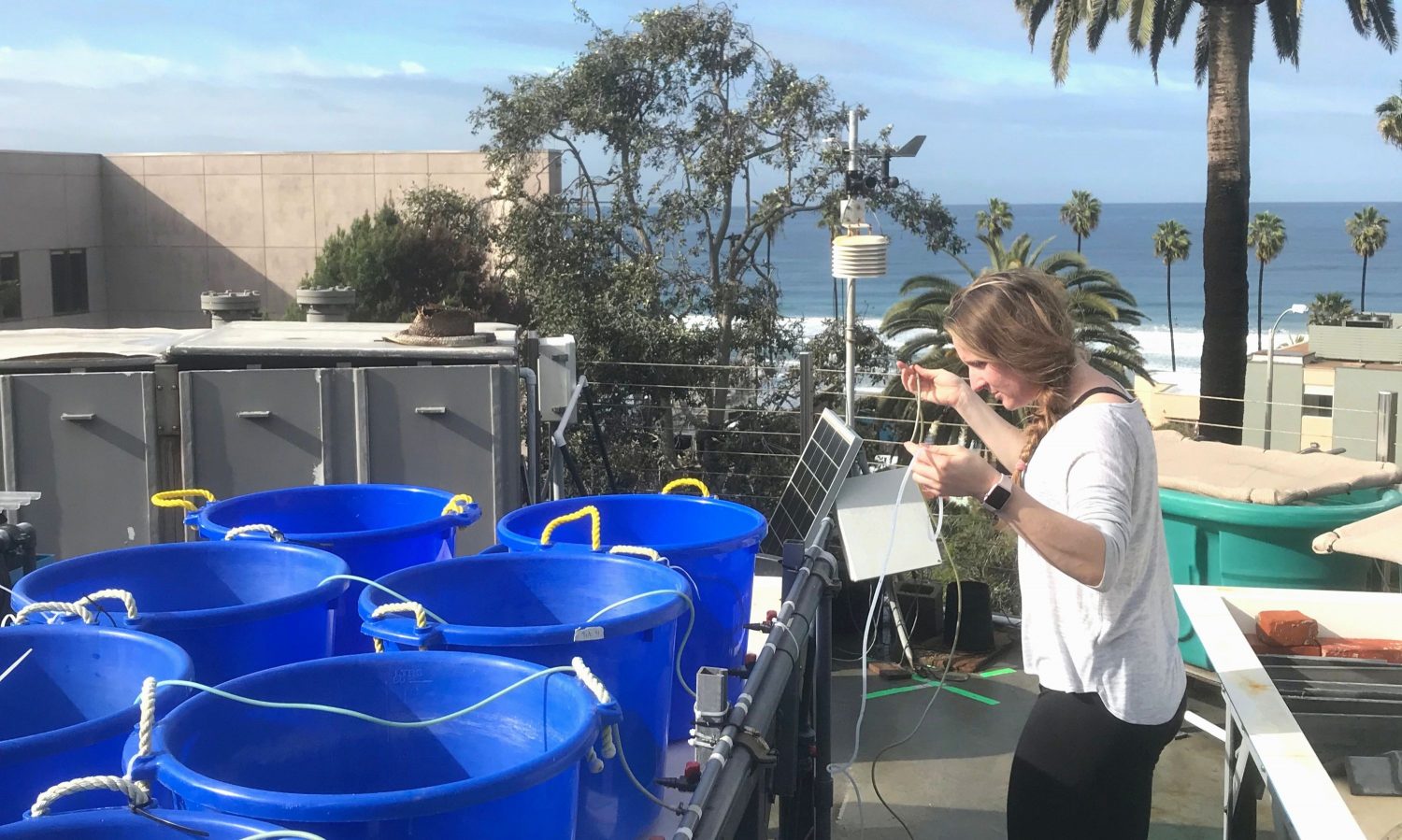Katja Whitham, MAS MBC Candidate ’19
Yes, you read that correctly: this blog post will be about HOBOs and Pantyhose. Unusual images may have begun to form in your imagination, so please allow me to explain.

Photo: Katja Whitham
For the 2019 Winter Quarter, Hilly Hicks and I, both plant-lovers, decided to research California native seaweeds. Seaweeds have a new claim-to-fame as a superfood, containing large amounts of nutrients, minerals, and antioxidants. And it’s true! Ulva lactuca, more commonly known as sea lettuce, has more calcium than whole milk, and more iron than a sirloin steak, without all the negative things like fat and cholesterol associated with some animal products. Now, your sushi and poke bowls will taste even better because of all the superfood powers the seaweed is providing.
But where exactly is the seaweed coming from? It turns out that roughly 95% of seaweed consumed in the United States comes from Asian countries. During the transportation process, the seaweed is dried or frozen, altering its nutritional properties. If that wasn’t bad enough, many dyes and additives are applied to the seaweed to resemble the bright green color of its fresh state. So not only is the seaweed we are consuming not as ‘super’ as we thought due to its transportation, but the carbon emissions associated with this importation is also unsettling. There has to be a better way! Aren’t there seaweeds here in California?
The answer, of course, is yes.
But with the current food and local buying trends, harvesting large amounts of local seaweeds to meet this demand is not a feasible option. That’s why Hilly and I worked with Dr. Jen Smith and Brant Chlebowski to look at seaweed aquaculture as a way of providing local, nutrient-rich seaweed options. We did growth experiments with three local and edible seaweed species:Â Palmaria palmata, Gracilaria pacifica, and Ulva lactuca (seen below in chronological order from left to right). The purpose of these experiments was to identify the optimum amount of fertilizer to add to a crop of seaweed to produce the most biomass with the least amount of pests (epiphytes). Just like any home garden, fertilizer can be added to the water to help promote seaweed growth. We completed ten-day growth experiments using ten 70-quart tubs, an initial seaweed biomass of 50 grams, and applied different amounts of Osmocote fertilizer to each tub.
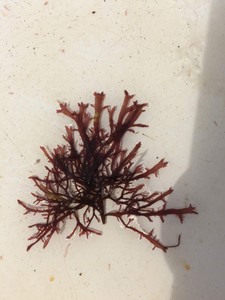
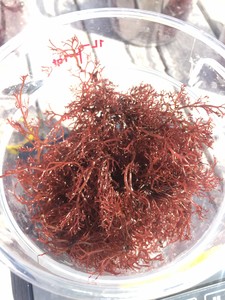
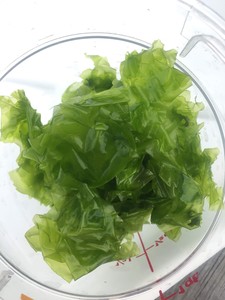
Photos: Katja Whitham
Time to explain the title of this post. To keep the fertilizer from escaping our flow-through system (this just means we are pumping in water from the ocean that then flows through our system, gets filtered and returned to the sea), we put the pellet shaped fertilizer into pantyhose and attached that to our tubs. Now on to the HOBOs. HOBOs, in this case, are data loggers. They capture atmosphere and underwater environmental conditions, and were used in our experiments to capture temperature and light information. All in all we completed four experiments. It wasn’t all smooth sailing, though. It turns out that having a good starting crop, one without epiphytes, a rich color, and strong branching, is pretty important. We did not have a good starting crop for our first experiment with G. pacifica, and ended up losing biomass in each treatment. Luckily for our second experiment we used a different starting crop, resulting in a biomass increase for all treatments.
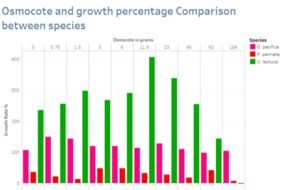 Our results show that more isn’t always better. In fact, G. pacifica and P. palmata grew the best with lower amounts of fertilizer. Even U. lactuca growth maxed out at 11.5 grams of fertilizer added. This means farmers will have to spend less money on fertilizer because a large amount is not needed. Our results are a starting point for large-scale seaweed aquaculture. These experiments can be replicated and scaled up to support locally-grown aquaculture farms, bringing fresh, nutrient-rich seaweeds to California, eliminating the negative impacts of importation.
Our results show that more isn’t always better. In fact, G. pacifica and P. palmata grew the best with lower amounts of fertilizer. Even U. lactuca growth maxed out at 11.5 grams of fertilizer added. This means farmers will have to spend less money on fertilizer because a large amount is not needed. Our results are a starting point for large-scale seaweed aquaculture. These experiments can be replicated and scaled up to support locally-grown aquaculture farms, bringing fresh, nutrient-rich seaweeds to California, eliminating the negative impacts of importation.
References:
Chan, J.C., Cheung, P.C., Ang, Jr., P.O. (1997). Comparative Studies on the Effect of Three Drying Methods on the Nutritional Composition of Seaweed Sargassum hemiphyllum. Journal of Agricultural and Food Chemistry, 45(8), 3056-3059
McArtain, P., Gill, C. I. R., Brooks, M., Campbell, R., & Rowland, I. R. (2007). Nutritional Value of Edible Seaweeds. Nutrition Reviews, 65(12), 535-543. doi:10.1111/j.1753-4887.2007.tb00278.x
Radulovich, R., Neori, A., Valderrama, D., Reddy, C. R. K., Cronin, H., & Forster, J. (2015). Chapter 3 – Farming of seaweeds. In B. K. Tiwari & D. J. Troy (Eds.), Seaweed Sustainability (pp. 27-59). San Diego: Academic Press.

